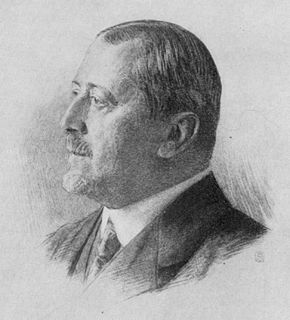
Papyrus is a material similar to thick paper that was used in ancient times as a writing surface. It was made from the pith of the papyrus plant, Cyperus papyrus, a wetland sedge. Papyrus can also refer to a document written on sheets of such material, joined side by side and rolled up into a scroll, an early form of a book.

Papyrology is the study of manuscripts of ancient literature, correspondence, legal archives, etc., preserved on portable media from antiquity, the most common form of which is papyrus, the principal writing material in the ancient civilizations of Egypt, Greece, and Rome. Papyrology includes both the translation and interpretation of ancient documents in a variety of languages as well as the care and conservation of rare papyrus originals.
Zenon or Zeno, son of Agreophon, was a public official in Ptolemaic Egypt around the 250s-230s BC. His writings are known from a cache of papyrus documents which was discovered by archaeologists in the Nile Valley in 1914.
The University of Michigan Library is the academic library system of the University of Michigan and the second largest research library in the world by volumes held.

The Greek Magical Papyri is the name given by scholars to a body of papyri from Graeco-Roman Egypt, written mostly in ancient Greek, which each contain a number of magical spells, formulae, hymns, and rituals. The materials in the papyri date from the 100s BCE to the 400s CE. The manuscripts came to light through the antiquities trade, from the 1700s onward. One of the best known of these texts is the Mithras Liturgy.
The Leiden Conventions or Leiden system is an established set of rules, symbols, and brackets used to indicate the condition of an epigraphic or papyrological text in a modern edition. In previous centuries of classical scholarship, scholars who published texts from inscriptions, papyri, or manuscripts used divergent conventions to indicate the condition of the text and editorial corrections or restorations. The Leiden meeting was designed to help to redress this confusion.

Arthur Surridge Hunt, FBA was an English papyrologist.

The Oxyrhynchus Papyri are a group of manuscripts discovered during the late nineteenth and early twentieth centuries by papyrologists Bernard Pyne Grenfell and Arthur Surridge Hunt at an ancient rubbish dump near Oxyrhynchus in Egypt.
The Center for the Study of New Testament Manuscripts (CSNTM) is a 501(c)(3) non-profit organization whose mission is to digitally preserve Greek New Testament manuscripts. Toward that end, CSNTM takes digital photographs of manuscripts at institutions, libraries, museums, monasteries, universities, and archives around the world. The images produced are freely accessible on the Center's website—a searchable library of Greek New Testament manuscripts. With more than 50,000 users examining manuscripts in their digital library each year, the Center's digitization work facilitates a partnership between manuscript owners, archivists, and researchers around the world.
Naphtali Lewis was an American papyrologist who published extensively on subjects ranging from the ancient papyrus industry to government in Roman Egypt. He also wrote several social histories of Ptolemaic and Roman Egypt to make his research more accessible to non-specialists. He was married to the psychoanalyst Helen Block Lewis (1913–1987), and they had two children, John Block Lewis and Judith Lewis Herman, a physician who followed in her mother's professional footsteps.
Dirk D. Obbink is an American papyrologist and classicist. He was Lecturer in Papyrology and Greek Literature in the Faculty of Classics at Oxford University until 6 February 2021, and was the head of the Oxyrhynchus Papyri Project until August 2016. Obbink was also a fellow and tutor in Greek at Christ Church Oxford, from which role he was suspended in October 2019.
BGU or Berliner griechische Urkunden is an ongoing publishing program of Greek documents, primarily Greek papyri by the Berlin State Museums, primarily from the papyrus collection of the Egyptian Museum of Berlin. The project was originally entitled Ägyptische Urkunden aus den Königlichen Museen zu Berlin but then changed the title to Staatlichen Museen when the Museums' status changed. The term "papyrologist" itself was coined in connection with the establishment of the BGU project.
The Kelsey Museum of Archaeology is a museum of archaeology located on the University of Michigan central campus in Ann Arbor, Michigan, in the United States. The museum is a unit of the University of Michigan's College of Literature, Science, and the Arts. It has a collection of more than 100,000 ancient and medieval artifacts from the civilizations of the Mediterranean and the Near East. In addition to displaying its permanent and special exhibitions, the museum sponsors research and fieldwork and conducts educational programs for the public and for schoolchildren. The museum also houses the University of Michigan Interdepartmental Program in Classical Art and Archaeology.
William Hailey Willis was an American classicist and a leading twentieth century papyrologist.
Petra Marieke Sijpesteijn is professor of Arabic at Leiden University. She was the founding president of the International Society for Arabic Papyrology.
American Studies in Papyrology is a book series established in 1966 by the American Society of Papyrologists. The series editors are James Keenan (editor-in-chief), Kathleen McNamee, and Arthur Verhoogt.
Apollonius was the dioiketes or chief finance minister of Egypt during the reign of Ptolemy II Philadelphus. Little is known about his personal life; in ancient documents, he is called simply "Apollonius the dioiketes" without recording his home city or his father's name. But a great amount of information has survived about his public role, in the archive of papyri kept by his assistant Zenon.
The conservation and restoration of papyrus material is an activity dedicated to the preservation and protection of objects of historical and personal value made from papyrus from Ancient Egypt.
Elinor Mullett Husselman was an American Coptic scholar and papyrologist. She was Curator of Manuscripts and Papyrology at the University of Michigan Library and Curator of the Kelsey Museum of Archaeology for forty years, from 1925 to 1965.









